THE YEAR 2017 was the fourteenth consecutive year in which the central government’s first policy document, China’s No. 1 Document 中央一号文件, focussed on rural issues and emphasised official support for agricultural development. Over the last several decades, China’s urban-biased economic boom has triggered demographic and other changes that seriously challenge the country’s capacity to feed itself. With about twenty-two per cent of the world’s population (over nine per cent of whom remain undernourished) and only seven per cent of its total agricultural acreage, it is a pressing problem.
Leaving the Farm

Figure 1: Share of urban population across provinces in China, 2015
Source: China Statistical Yearbook 2016
Since economic reforms began in the late 1970s, employment opportunities generated by industrialisation and the expansion of the urban construction and service sectors have stimulated rural–urban migration on a massive scale. From 1979, China’s urban population has grown by about 586 million to reach 771 million in 2015. This population is highly concentrated along China’s south-eastern coast (see Figure 1). The central government’s National New-Type Urbanisation Plan 2014–2020 国家新型城镇化规划, announced in March 2014, when China’s urban population was 53.7 per cent of its population, has set a target for the urban population to increase by one percentage point a year to reach sixty per cent by 2020 — a figure comparable to other developing countries with similar per capita income levels. As a result, both the absolute number and relative share of people engaged in the agricultural sector will continue to fall rapidly.
According to the Migrant Workers Report 2016, the total number of migrant workers in 2016 reached 281.71 million. Of these, sixty-six per cent were male and seventy-six per cent were under the age of fifty. Most new migrants followed their predecessors into the wealthier eastern provinces. China’s remaining, steadily declining rural workforce increasingly comprises female and elderly workers. But will this necessarily be a bad thing for China’s agriculture, and hence its food security?
My own research suggests that the answer to this is yes, it will be. I show that rural-to-urban migration has a negative net impact on agricultural labour productivity (rice yield per worker per day), because the off-farm income that those migrants bring home, which can be used for agricultural investment, does not compensate for the ‘lost labour’ effect of out-migration. China’s aggregate rice output has fallen as a result of this mass migration. This fall in output is compounded by the ageing of the agricultural workforce, which impacts negatively on productivity. The only good news is that female workers appear to be more productive than male workers — but not enough to offset the negative impacts of migration and ageing farmers.
The Future of Farming
The consolidation of farmland is one potential solution for raising agricultural output. Although land was collectivised in the 1950s and 1960s, today, a typical Chinese farm is less than an acre in size. The large number of small, non-contiguous landholdings has impeded the modernisation of Chinese agriculture that could stem from technological upgrades, mechanisation, and economies of scale.
Farmers do not own land, which belongs to the state, but have decades-long leaseholds from their village collective. Individual farmers are allowed to use the land under a contract system that has been in place since the 1970s. Land reforms in recent years have opened the door to corporate farming, heralding a new era for agricultural development. Through a refinement to collective ownership called ‘land management rights’, a village with agreement by all of its farmers may collectively transfer its land to a corporation that pays the village an annual rent, which is then distributed to individual farmers. This is not aimed at creating mega-farms, but rather at facilitating land consolidation, enabling farmers to use machinery and new technology efficiently, and to embrace corporate farming, which allows them to hand over all their produce to a corporation. This model provides rent income to elderly farmers unable to tend subsistence plots, and wages to the left-behind women and others trained to participate in mechanised farming.
However, the central government continues to stress the inviolability of the rural collective ownership system. Although private land ownership has greatly contributed to efficiency and welfare gains in other developing countries such as Mexico, it simply is not on the cards for China in the foreseeable future. Because private land ownership could result in farmers’ deciding to use the land for non-agricultural purposes, it could threaten the farmland ‘red line’, originally set at 1.818 billion mu of arable farmland (about 121.2 million hectares) by the end of 2015. On 4 February 2017, the State Council published a ‘national territorial planning outline’ 全国国土规划纲要 (2016–2030), raising this ‘red line’ to 1.865 billion mu (about 124.33 million hectares) by 2020, with the retention of at least 1.825 billion mu (about 121.67 million hectares) by the year 2030.
Given the shrinking and ageing rural workforce, and increasing urban pressures on rural land, technology will have to play a pivotal role in meeting China’s food needs in the future. Already, China is spending billions of yuan on water systems, seeds, robots, and data science to develop sustainable, high-yield agricultural practices. But the future of farming is about more than growing plants — it’s about growing businesses too. Farmers need not only to cultivate bigger fields and raise yields but also to ‘grow smarter’ and sell wiser.
Already, there is a rural e-commerce boom. Over the last decade, China has created more than one thousand ‘Taobao’ villages 淘宝村, as thousands of former residents have returned home from the cities to build up their local village economies. Making use of Alibaba-owned Taobao — the nation’s largest e-commerce platform — farmers are now able to take charge of the whole agricultural production process from field to market, enabling them, rather than traditional commodity traders and middlemen, to earn more than before. Part of the way the government helps is to enrich rural information networks and logistics system. With the rapid development of express postal networks, farmers are able to sell online not only trinkets, but also perishables. The government encourages this, as it serves the national policy priority of eliminating poverty in rural China — it also attracts labour back to the farms.
Although the land reform and technology policies discussed in China’s No.1 Document for 2017 do not encompass the privatisation of land, they do provide more flexibility for farmers to take control of their livelihoods. This could generate prosperity for rural dwellers, and ultimately feed much of the world’s largest population in the process.
Notes
Shenggen Fan, ‘Reshaping China’s food system through agricultural “supply-side structural reform” ’, IFPRI BLOG, 9 April 2017, online at: http://www.ifpri.org/blog/reshaping-chinas-food-system-through-agricultural-%E2%80%98supply-side-structural-re-form%E2%80%99
China Statistical Yearbook 2016, online at: http://www.stats.gov.cn/tjsj/ndsj/2016/indexch.htm
Bai X, Shi P, Liu Y, ‘ Realizing China’s urban dream’, Nature, 509(8) (2014): 158–160.
Migrant Workers Report 2016 年农民工监测调查报告, online at: http://www.gov.cn/xinwen/2017-04/28/content_5189509.htm#1
‘Agriculture in China: challenges, shortages, imports and organic farming’, January 2013, online at: http://factsanddetails.com/china/cat9/sub63/item348.html
Lucy Hornby, ‘China land reform opens door to corporate farming’, Financial Times, 3 November 2016, online at: https://www.ft.com/content/9d18ee2a-a1a7-11e6-86d5-4e36b35c3550?mhq-5j=e5
See China’s Agricultural Dilemma, AGWEB, 24 May 2017, online at: https://www.agweb.com/article/chinas-agricultural-dilemma–blmg/; and Saibal Dasgupta, ‘China Embraces Corpo- rate Farming’, VOA, 2 November 2016, online at: https://www.voanews.com/a/china-embraces-corporate-farming/3575869.html
Alain De Janvry et al., ‘Delinking land rights from land use: Certification and migration in Mexico’, The American Economic Review, 105.10 (2015): 3125–3149.
‘China’s farmland well above “red line” ’, Xinhuanet, 22 April 2015, online at: http://news.xinhuanet.com/english/2015-04/22/c_134175085.htm
Ministry of Land and Resource of the People’s Republic of China 全国国土规划纲要 (2016–2030), 5 February 2017, online at: http://www.mlr.gov.cn/tdsc/tdgh/201702/t20170205_1435273.htm
Shuping Niu et al., ‘Farming the World: China’s Epic Race to Avoid a Food Crisis’, Bloomberg News, 22 May 2017, online at: https://www.bloomberg.com/graphics/2017-feeding-china/
Sarah Mock, ‘The Future of Farming is Not Farming’, Newco Shift, 16 December, 2016, online at: https://shift.newco.co/the-future-of-farming-is-not-farming-10f250b0ee23
Chris Weller, ‘Chinese “Taobao villages” are turning poor communities into huge online retail hubs’, Business Insider Australia, 28 February 2017, online at: https://www.businessinsider.com.au/chinese-taobao-villages-escape-poverty-2017-2
Josh Freedman, ‘Once poverty-stricken, China’s “Taobao villages” have found a lifeline making trinkets for the internet’, Quartz, online at: https://qz.com/899922/once-poverty-stricken-chinas-taobao-villages-have-found-a-lifeline-making-trinkets-for-the-internet/



